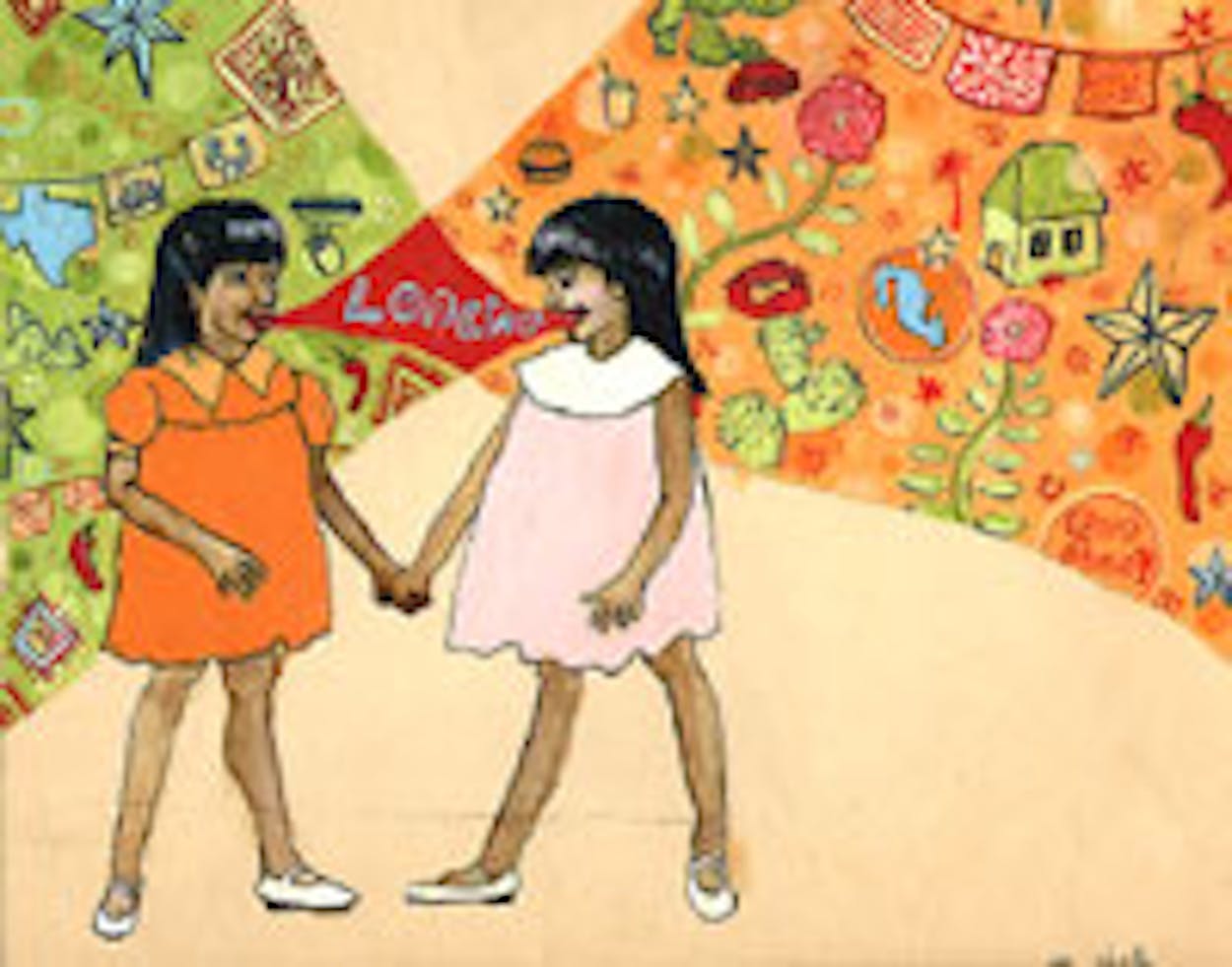It was 1985 and I was in a prekindergarten class at Palmer Elementary in the small South Texas town of Pharr. My teacher, Mrs. Herrera, thought I didn’t know any English, and I had no plans to let her know I did (thanks to my eldest sister, who had made sure I knew English before I entered school). All the other kids in my class spoke only Spanish; I didn’t want to be the conceited one who spoke in English. Then one day Mrs. Herrera stumped me with a question I couldn’t answer in Spanish. I was forced to say it in English—and just like that, my secret was out. When my Spanish-speaking mother wanted to know why I had refused to speak English in school, I was stumped again. The Spanish word for “embarrassed” (avergonzada) wouldn’t come to me, so I tried a translation based on phonetics and told her I had been too embarazada. I thought she’d understand my little Spanglish invention, but she just burst out laughing. I, her four-year-old daughter, had just told her I was too pregnant to speak English.
And that was my first experience with Spanglish, a hybrid of English and Spanish used by U.S. Latinos who live between two coexisting worlds (Mexican Americans, for example). It wouldn’t be the last time Spanglish backfired on me. In fact, every time I’m surrounded by native Spanish speakers, I pray that my Spanglish doesn’t intrude into the conversation. But it usually does, and the Spanish pros either smile at me with a pitying look that says I’ve lost touch with my heritage or glare critically at me as if I’ve just raped their language.
Strangers usually give me the pity smile. At Mexican restaurants, if my server is Latino and my Spanish sounds less than perfect, I’m rewarded with it. God forbid I should ask for el menú de lonche (Spanglish for “lunch menu”) instead of the proper menú de almuerzo. I encountered the pity smile when I met my boyfriend’s mother for the first time. She speaks flawless Spanish, so naturally I was terrified. Around my third Spanish sentence, my Spanglish popped out. “Nunca hay donde parquear (There’s never anywhere to park),” I said, wincing as soon as I had said that last word. Parquear is Spanglish for the Spanish estacionar. She gave me the pity smile.
Those who know me better give me the critical glare. I hate the critical glare. Every time my family heads to Mexico to visit relatives, I dread the inevitable. I’ll be talking with my cousins and my Spanglish will trickle into my otherwise fluent Spanish. They’ll call me pocha, which means “sellout.” In my Spanish literature classes at Northwestern University, near Chicago, there’s added pressure to speak perfect Spanish. Professors jeer when I speak up in class and Spanglish flows out of my mouth.
Don’t they understand that Spanglish is my native tongue? I grew up on the Texas-Mexico border with both Spanish and English, and my Spanglish is the product of that. I spoke Spanish with my parents, Spanglish with my siblings and friends, and English with everyone else. My thoughts are in Spanglish.
I left Texas to go to Northwestern in 1998, but every time I hear Spanglish, I feel I’m home again. There’s no better icebreaker than discovering that you and a stranger both speak it. It carries an implicit understanding of each other’s background (immigrant parents, bilingual environment) and plight (trying to make it in a country where Latinos are still a minority). Suddenly, you’re amigos, and you’re dancing effortlessly between the two languages. At Latino nightclubs, Spanglish wins me friends in the ladies’ room. Wherever the employees are Spanglish-speaking Latinos, it gets me perks. And at Northwestern, it has given me my best friends. I was in a dorm hallway my freshman year when I heard them speaking Spanglish, and I impulsively poked my head in their room and joined their conversation. They didn’t mind—Spanglish speakers embrace other Spanglish speakers. It’s an unwritten law.
And that’s why I refuse to give it up, despite the pity smile and the critical glare. I’ve had a lifetime love affair with Spanglish, embarazada or not.







